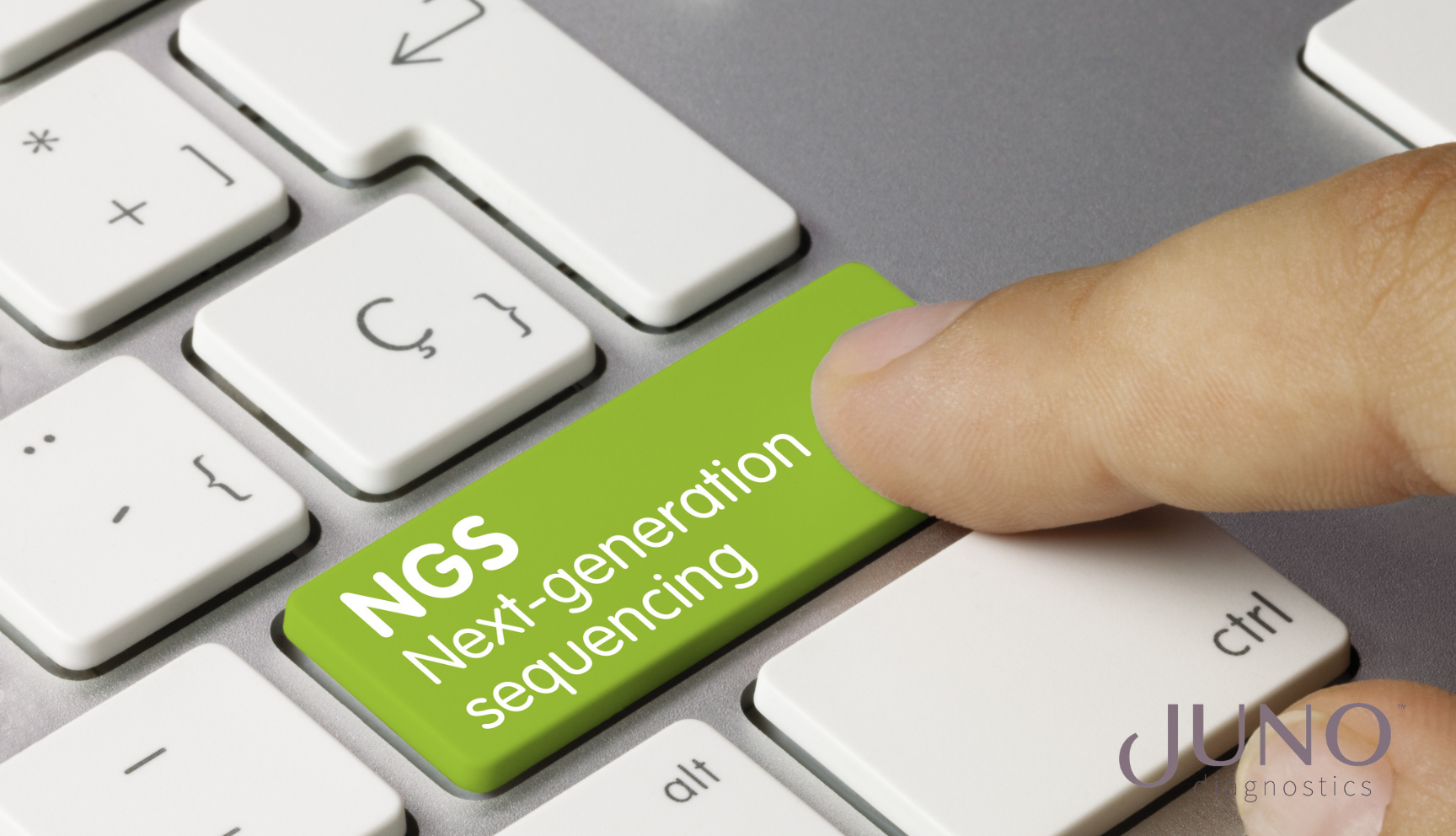Blog
What Are Different Types of Prenatal Blood Screening Tests?
During pregnancy, your healthcare provider may offer or recommend different blood screening tests to complement the information you’ll gather from ultrasound screening. Blood screening tests usually will analyze different hormones, proteins, or pieces of genetic material in order to assess your pregnancy’s chance for certain health conditions which may not be visible on ultrasound.
What Are Soft Markers, and What Does It Mean if They Appear in My Ultrasound?
An ultrasound appointment can be a special experience for expectant parents! You’ll have the opportunity to connect with your growing family and perhaps learn so much more about your baby, including your baby’s fetal sex. However, these scans are primarily tools used to check in on your little one's growth and development.
Understanding Next-Generation Sequencing (NGS)
If you’re considering prenatal genetic testing, such as non-invasive prenatal screening (NIPS), you may be curious about how these tests work. The short answer is that most NIPS tests use next-generation sequencing (NGS) technology to assess a pregnancy’s chance for certain chromosomal conditions.
Understanding Cell-free DNA and Fetal Fraction
Cell-free DNA describes DNA (genetic material) that is not held or enclosed within a cell. Whereas most human DNA is typically stored along structures called chromosomes located within the nucleus (control center) of a cell, cell-free DNA pieces are no longer confined within the cell’s nucleus.
Preparing To Welcome A Baby Who Has Down Syndrome
Each year in the U.S., around 6,000 babies are born with Down syndrome (trisomy 21). So if you’ve recently learned your baby has a diagnosis of Down syndrome, that means you’re joining a pretty big community of caring, supportive families who have a pretty good idea of exactly what you’re going through. The diagnosis can be overwhelming, especially at first, as you start picturing the unique challenges you’ll face on the road ahead. But, as any parent of a child with Down syndrome will tell you — you’re also in for more rewarding experiences than you could ever imagine.
Non-Invasive Prenatal Screening (NIPS): Benefits and Limitations
Non-invasive prenatal screening (NIPS), also referred to as non-invasive prenatal testing (NIPT), has become an increasingly popular prenatal genetic screening tool in recent years as it offers a relatively simple, noninvasive method of checking for certain conditions during pregnancy with a high degree of accuracy. However, as with all screening tests, there are limitations to noninvasive prenatal screening that are important to consider.
How Does Non-Invasive Prenatal Screening (NIPS or NIPT) Work?
Non-invasive prenatal screening (NIPS), also known as non-invasive prenatal testing (NIPT), is a prenatal genetic screen that can be done as early as 9 weeks gestation in a pregnant person of any age. NIPS first became commercially available in the US in 2011 with the launch of Sequenom’s MaterniT21 test and has since become an increasingly common tool for prenatal genetic screening.
What is Triple X (XXX) Syndrome?
Triple X syndrome, also called trisomy X or XXX syndrome, is a rare genetic condition that only affects people assigned female at birth. Most people are born with two sex chromosomes, either XX or XY. If you have two X chromosomes, you’re assigned female at birth; one X and one Y means you’re assigned male at birth. In triple X syndrome, there’s an extra X chromosome for three (XXX), and no Y chromosome is present.
Genetic Screening: Accuracy and Results
It’s normal to have questions about the accuracy of a screening result, given that screening tests are not able to give a definitive diagnosis and instead indicate an increased risk or probability. If you receive a high-risk screening result, how likely is it that your pregnancy truly has the condition you were positive for?
What Is Trisomy 13?
You’ve likely heard of Down syndrome, also known as trisomy 21, but you may be less familiar with trisomy 13. Trisomy 13 is a much less common condition than Down syndrome, but like Down syndrome, Trisomy 13 is caused by having an extra copy of a chromosome – in this case, an extra copy of chromosome 13. Trisomy 13 is also sometimes referred to as Patau syndrome.
What Is Trisomy 18?
Trisomy 18, also called Edwards syndrome, is a medical condition caused by the presence of a third copy of chromosome 18. When an extra chromosome is present, extra genetic instructions are present, which affects the baby’s development during pregnancy and after birth.
Is NIPS (Non-Invasive Prenatal Screening) a Safe DNA Test?
Non-invasive prenatal screening (also called non-invasive prenatal testing, or NIPT) is one way to figure out if your baby is at risk for different genetic conditions. NIPS looks at fragments of fetal and placental DNA, called cell-free DNA, found in a pregnant person’s blood.





